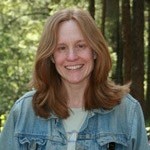
Environment
Climate Change – City Solutions and Innovations
 Learn about the New Energy Cities program that works with small- to medium-sized Northwest communities to foster laboratories of innovative, replicable city-led climate change solutions for significant greenhouse gas emission (GHG) reduction and increased carbon storage in urban settings. The goal of the New Energy Cities program is to help a growing family of leaders and staffs of small- to medium-sized Northwest cities succeed in building low-carbon, climate-smart communities.
Learn about the New Energy Cities program that works with small- to medium-sized Northwest communities to foster laboratories of innovative, replicable city-led climate change solutions for significant greenhouse gas emission (GHG) reduction and increased carbon storage in urban settings. The goal of the New Energy Cities program is to help a growing family of leaders and staffs of small- to medium-sized Northwest cities succeed in building low-carbon, climate-smart communities.
Show Summary
Listen to Segment 1 – National update on Climate Change (8 min)
Listen to Segment 2: 4 Critical Success Factors for cities that want to impact climate change.
Listen to Segment 3: Practical steps cities can be part of the solution for climate change.
Listen to Segment 4: What you can do to impact climate change?
Blog Post
On the Frontlines of City-Led Climate Solutions
In the absence of national leadership, the imperative for local action to significantly reduce carbon emissions could not possibly be more urgent.
Climate Solutions’ New Energy Cities team works on the frontlines of city-led climate and clean energy innovation, assisting small- to medium-sized Northwest communities to significantly reduce carbon emissions by adopting climate-smart, clean energy solutions in eco-mobility, renewable energy, highly efficient, intelligent buildings, and smart grid technology.
We help city and community leaders push the envelope on carbon-reduction strategies in an attempt to answer a fundamental and difficult question: how do cities grow with strong economies while reducing their carbon footprints?
In order for us to help cities answer this question we take a systems approach. We deliver sustainable energy plans that look at both the broad strategies that must be employed to reach long-term carbon-reduction, as well as specific tactics that must roll up to the overall targets.
In 2013, we have three strategic focus areas: cluster cities, climate and clean energy solutions how-to, and robust communications.
Cluster Cities: We will develop two separate clusters of cities, one in the Puget Sound region, building upon our 2012 work developing carbon calculations and emissions projections for the City of Issaquah, as well as strategies to attain carbon reduction in the built environment, transportation, waste/water management, and carbon storage.
The second cluster will be in Oregon and will work in conjunction with both Clean Energy Works Oregon, as well as the Oregon Governor’s Office, which in its 10-Year Energy Action Plan has articulated the desire to promote the sustainability and carbon reduction efforts of “cutting-edge communities.”
The desired outcome of our cluster strategy is twofold: (1) communities in Washington and Oregon developing and implementing ambitious carbon-reduction and carbon-storage strategies related to the built environment, transportation, waste and water management and, (2) support for statewide climate efforts in Washington and Oregon with an eye toward building regional support for climate and clean energy solutions.
Climate and Clean Energy Solutions How-To: With this strategy we aim to translate what we learn and test with our cluster strategy into practical clean energy how-to guides for cities that can be useful to communities throughout the country.
A key aspect of this work is delineating: 1) what cities do to create sustainable energy plans that is generic and therefore easily replicable, and 2) what is tailored, and therefore is not easily replicated and requires customization.
A second key component is the focus we are placing on threading the needle with utilities, which means understanding what the barriers are to utility innovation with energy efficiency, renewable energy, and smart grid deployment, and figuring out how to address them with key utility players.
A third component is drilling down on the clean energy financing strategies that actually work versus those that are abstract and waiting to be tested.
The desired outcome with our climate solutions how-to work is proof that city-led climate and clean energy solutions are working and can be financed and scaled.
Robust Communications: All of our 2013 work has a significant communications component because we know that the key to success is replication and the key to replication is figuring out how to communicate what is really happening with clean energy innovation.
This presents a challenge because this is such a dynamic field, so staying on top of what works is hard, but we have been in this arena long enough now that we know who the key innovators are and we think we know what works.
Our strategic communications approach requires staying current on a weekly basis with current trends, which we accomplish by writing our Weekly Wrap ensuring that we are extrapolating our learning by writing bi-weekly blogs; making sure we are communicating to our base, which we do by sending out our bi-monthly newsletter; and making sure we are compiling and synthesizing our work by developing our clean energy how-to guides.
The desired outcome for our communications strategy is evidence that the case studies, reports, webinars, conferences, blogs, and hands-on work that the New Energy Cities team engages in result in cities replicating climate solutions.
About our Guest
 Eileen V. Quigley directs the New Energy Cities (NEC) program at Climate Solutions, which works with small- to medium-sized Northwest communities to reduce carbon emissions through climate-smart, clean energy solutions in deep energy efficiency, renewable energy, eco-mobility, and smart grid technology.
Eileen V. Quigley directs the New Energy Cities (NEC) program at Climate Solutions, which works with small- to medium-sized Northwest communities to reduce carbon emissions through climate-smart, clean energy solutions in deep energy efficiency, renewable energy, eco-mobility, and smart grid technology.
Eileen is an expert in city-led clean energy innovation and co-author of Powering the New Energy Future from the Ground Up: Priorities in City-Led Energy Innovation, a studyof 34 American cities that are demonstrating how communities with fewer than 250,000 residents are reducing their dependence upon fossil fuels for energy. She regularly speaks and blogsabout how communities are pursuing a cleaner, carbon-neutral future, and co-writes theNew Energy Cities Weekly Wrap.
Prior to joining Climate Solutions in 2009, Eileen ran RealNetworks’ Nonprofit Affairs Division, which helped nonprofit organizations use the Internet for social change. She has been a civic leader in the Puget Sound since 1988, having run the Municipal League of King County for four years and served on numerous Puget Sound nonprofit boards and civic taskforces. She edited a quarterly journal of public policy, economics, and culture for the Pacific Northwest and Western Canada for three years and spent five years as a magazine and newspaper journalist in Washington, DC and New York, NY, prior to moving to the Pacific Northwest in 1988.
Eileen received her Master of Science in Journalism from Columbia University in 1983 and her Bachelor of Arts in Literature from Yale University in 1980.
Twitter: @evquigley.
Links
Podcast: Play in new window | Download
Subscribe: Apple Podcasts | RSS | podcast



